Cat's Health.

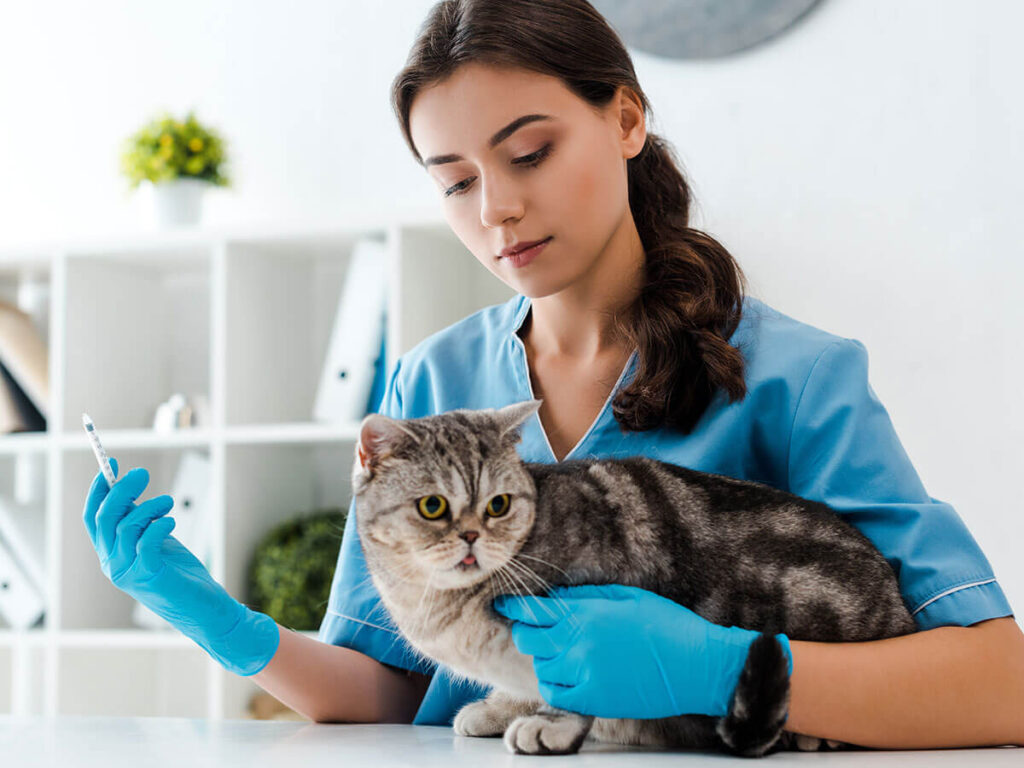
Vaccinations: What’s necessary?
Fine, but what is necessary? It’s a sensitive topic that can hardly be discussed without bringing the anger of some of the readership upon us. Let’s approach it in a well-structured way:
The status quo in Germany is frequently as follows: The usual annual vaccines are against cat flu (feline calicivirus and feline herpesvirus) and feline panleukopenia (feline parvovirus). Cats enjoying the outdoor world are also vaccinated against rabies and FeLV (feline leukaemia virus).
In addition, many breeders and other cat guardians have their cats vaccinated also against FIP (feline infectious peritonitis) and chlamydia (a pathogen attacking the eyes).
It means that on a yearly basis, indoor cats get at least three, outdoor cats as many as five, while cats for breeding even six vaccinations.
Vaccinate as little as possible and as much as necessary.
We firmly believe that cats are vaccinated too extensively and too frequently in Germany.
In the USA, university veterinarians have been criticizing annual vaccinations for long years now. This criticism was reflected in Kirk’s Current Veterinary Therapy, a popular guidebook for practicing veterinarians. It lasted eventually until 1997, when the American Veterinary Medical Association introduced new vaccination directives and ad absurdum followed the practice that is still current practice in Germany today.
Vaccination guidelines in the USA are as follows – and even this vaccination schedule is subject to dispute as being too frequent:
Basic immunization
Repeated a year later
Booster vaccination every three years afterwards
The pathogens the cat is vaccinated against are determined based on the form and region of keeping.
Cats have to receive basic immunization against feline panleukopenia. This vaccine is given after the age of eight weeks and repeated in four weeks. The fact that basic immunization lasts for a lifetime is very much in favour of this vaccine. The feline immunological memory functions like that of humans. There are the so-called humoral immunity that can be measured through antibodies, and cell-mediated immunity that produces immune cells. Especially cell-mediated immunity remains active normally for a lifetime.
Cats may receive basic immunization against cat flu. Yet, vaccinated animals can get infected, because the flu vaccine is by far not as good as the panleukopenia vaccine. The vaccine against cat flu does not prevent the infection. There are innumerable vaccinated cats carrying caliciviruses (less frequently: herpesviruses) and they shed the viruses too. Despite higher vaccination percentages, the calicivirus emerges increasingly frequently nowadays. Following basic immunization, the question about the usefulness of an additional flu vaccination is definitely reasonable.
The vaccination against Chlamydia is often given via a combination preparation in the cat flu vaccine. However, the active ingredient has frequently emerging adverse effects. The vaccine does not provide protection against the infection; it only lessens the symptoms of the disease at best.
The vaccination against the feline leukaemia virus is often recommended for outdoor cats. In general, adult cats have adequate defence produced naturally in the body against this virus. In the cases of young outdoor cats to be vaccinated, it is crucial to determine prior to vaccination whether the cat is FeLV negative. It needs to be noted here that the development of vaccine-sarcomas is associated with FeLV vaccines at an above-average frequency.
The vaccine against feline infectious peritonitis is highly debated not only in Germany. Many vaccinated cats are already infected by the non-mutated form of coronavirus anyway, so vaccination is pointless. It affects more than 80% of domesticated cats. Coronavirus infection only rarely leads to the outbreak of FIP, mainly very young cats in stressful situations get sick – irrespective of their vaccination status.
You must have your cat vaccinated against rabies if you travel with your cat to particular countries. In addition, the rabies vaccination is recommended mainly for outdoor cats. The question here needs to be raised however, whether this vaccination makes any sense. In Germany, rabies in dogs has long been eradicated, in foxes since 2008. The only remaining risk is transmission by bats, because rabies in bats is not yet under control anywhere in the world. According to the Rabies Centre of FLI (Federal Research Institute for Animal Health) in Wusterhausen however, cases of rabies transmission by bat to cat are not known. (Source).
Please do not hesitate to start a critical discussion with your vet, and show him the current vaccination practice in the USA. The question we should ask here is:
Can a vaccine cause harm? And the answer clearly is: yes, it can.
Vaccine adverse events.
We are not at all against vaccination but we do our best to come to a reasonable benefit-risk assessment, which we miss in a number of progress reports. The fact that vaccines are associated with risks (frequently avoidable) is all too often concealed:
Vaccine Associated Fibrosarcoma (Vaccine Associated Sarcoma)
Vaccine associated sarcoma is a cancerous disease that develops at the vaccination site weeks or months following vaccination. It can be identified as a granuloma, in other words a thickening, a “lump” under the skin. Such a sarcoma can basically be treated conventionally only, meaning a radical and extensive operation. However, recurrence occurs almost every time, which new tumours eventually lead to death.
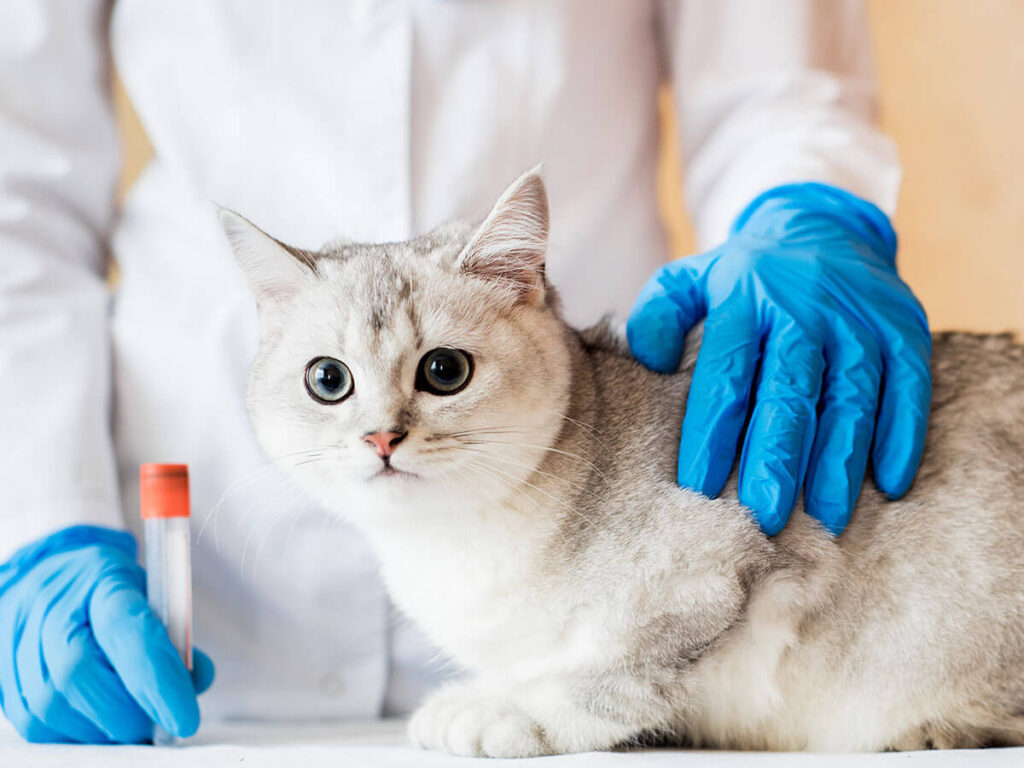
This disease is tended to be understated.
According to studies, the incidence rate ranges between 0.1% and 0.17%, i.e. once in every 750-1000 cases. Taking domesticated cats living in Germany today into consideration, and converted into figures it means 8,000-14,000 cases. So, vaccine associated sarcoma is not at all a marginal phenomenon.
There are clear-cut guidelines in the USA regarding where the vaccination shall be positioned. Therefore, vaccinating between the shoulder blades is a no-go, because a sarcoma at this body part is considered as untreatable. In addition, it is recommended that each vaccine should be administered individually, and combination vaccines should be avoided. You would be looking for such recommendations in Germany in vain.
Additional adverse vaccine reactions
Besides anaphylactic shock emerging right after vaccination, autoimmune reactions may also develop that lead to kidney impairment. In addition, various major allergic reactions may emerge. All these consequences of vaccinations are potentially or certainly lethal.
We are not intending to cause any vaccination panic. At the same time, you need to know that one vaccine “too much” is definitely harmful. Unnecessary vaccinations should be avoided by all means.
If you have further, specific questions about vaccination schedules, vaccines or risks, if you are interested in cat vaccination literature or trials, do not hesitate to contact us. We are happy to help you.
Our Conclusion
- Basic immunization against feline panleukopenia is useful and efficacious.
- Basic immunization against cat flu can be useful depending on the environment. Its effectiveness is moderate.
- Have your cat vaccinated with single vaccines at all times, rather than with combination preparations.
- Give preference to live (attenuated) vaccines and avoid vaccines containing adjuvants by all means.
- Have your cat vaccinated against rabies only when the cat enjoys the outdoor world in a rabies area, or when it is legislatively required. In this case, give preference to vaccines that require revaccination once every three years. There is no adjuvant-free rabies vaccine available in Germany today.
- Avoid vaccination against FeLV, FIP and FIV, because their efficacy is more than questionable.
- Have your cat vaccinated in its hind legs, and take a note of the vaccination spot, as well as the vaccine. Never let your pet vaccinated between the shoulders and also avoid the side of the chest if possible.
The recommendation to vaccinate (pets) annually is becoming less acceptable given the increasing number of adverse effects, especially the ones that cause a severe illness or even death, and given the growing number of available vaccines.
Dr. R. D. Schultz, veterinary immunology at the University of Wisconsin
Parasite Prevention.
Fleas, ticks, worms, etc.
A responsible guardian thoroughly checks the cats when they return home, looks for injuries, changes, ticks in the coat, takes a look at the paws and claws, looks into the eyes and checks the reaction of the iris. A quick temperature check at the ears or the base of the tail takes no time at all. Also check for changes in behaviour.
Cats are tough, they don’t always show when they are not feeling well.
Your vet will recommend regular parasite prevention for your cat. However, there are alternatives if you’d like to save your cat from exposure to medication for purely preventive reasons.
Parasite infestation can be naturally prevented through the administration of brewer’s yeast. Brewer’s yeast contains yeast’s natural vitamin B complex, and has a natural effect against parasite infestation through the activation of the cat’s skin metabolism. Parasite and tick infestation will decrease drastically. This way, resistance to the usual Spot-Ons cannot evolve in parasites at all.
Yet, make sure you have a pair of tick tweezers at home.
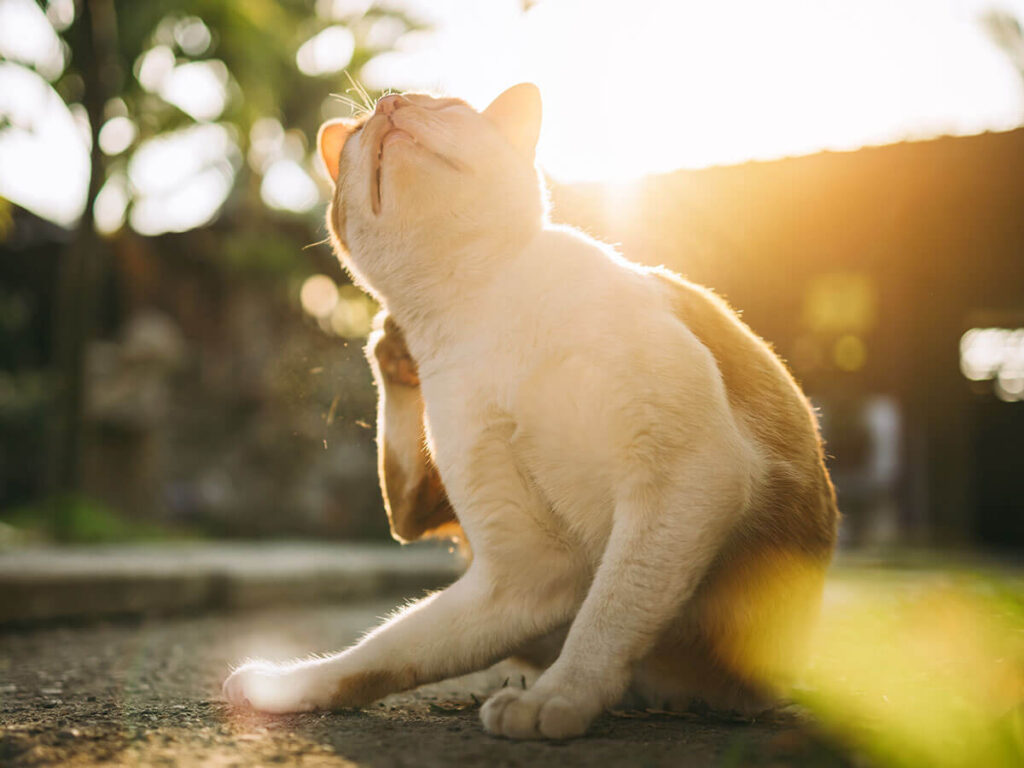
Fleas
Fleas are a nuisance not only for your cat.
Flea treatment is relatively time-consuming and painstaking.
Flea infestation is normally avoidable through the daily administration of some yeast. If your cat still scratches herself frantically check her bedding very thoroughly.
In case of a flea infestation, you’ll find flea faeces (flea dirt) on your cat’s bedding. They are small black specks. You can check whether they are really flea excretions by taking some of these black specks with a pair of tweezers and putting them on a white sheet of paper. Sprinkle some pure water on them.
If the water discolours to red, the specks are presumably flea faeces, in which case a treatment is recommended.
Flea treatment is relatively time-consuming and painstaking. Flea larvae live for about a year and can be killed with sprays or foggers (even when the manufacturer’s promise differs from this).
Lots of substances pose health risks to animals and people too. An option is a substance making fleas infertile through which their spreading can be prevented – consult your vet about it. Following an acute flea infestation, a tapeworm treatment may be necessary; have it explicitly proven first and do not start a treatment on spec.
If you experience flea infestation in your house or apartment, the only treatment that helps is washing, vacuuming and steam cleaning – as frequently and intensely as possible.
Deworming
Your vet will also recommend preventive deworming. Experienced cat guardians pay attention to anomalies in eating habits. You can also easily detect some worms with the help of a readily available simple microscope.
Many guardians abstain from preventive deworming – which however requires some knowledge and skills. Pay attention to anomalies, especially in eating habits and weight. Contact your vet if you suspect a tapeworm infestation and give your vet a faeces sample to examine. Several samples (over three days) are especially good. Should a worm infestation be detected, a treatment targeted to the specific parasites can be completed.
We advise against preventive deworming.
f you speak German, here is a well-established report on the topic: “Der Wurm und sein Wirt” by the journalist Monika Peichl. .
The most important form of prophylaxis is a healthy and intact immune system, which you can support with a top-quality and species-appropriate diet for your cat!
Is your kitty ill?
Let’s make it clear right at the beginning: diseases need to be recognized first. Most cats suffer silently without their guardians perceiving that something is wrong. Get to know your cat(s) as closely as you can and pay attention to changes in their behaviour.
In our experience, the majority of diseases in cats are caused by their diet. Lots of diseases can be avoided through feeding a high-quality diet or can be controlled again following a transition to species-appropriate food.
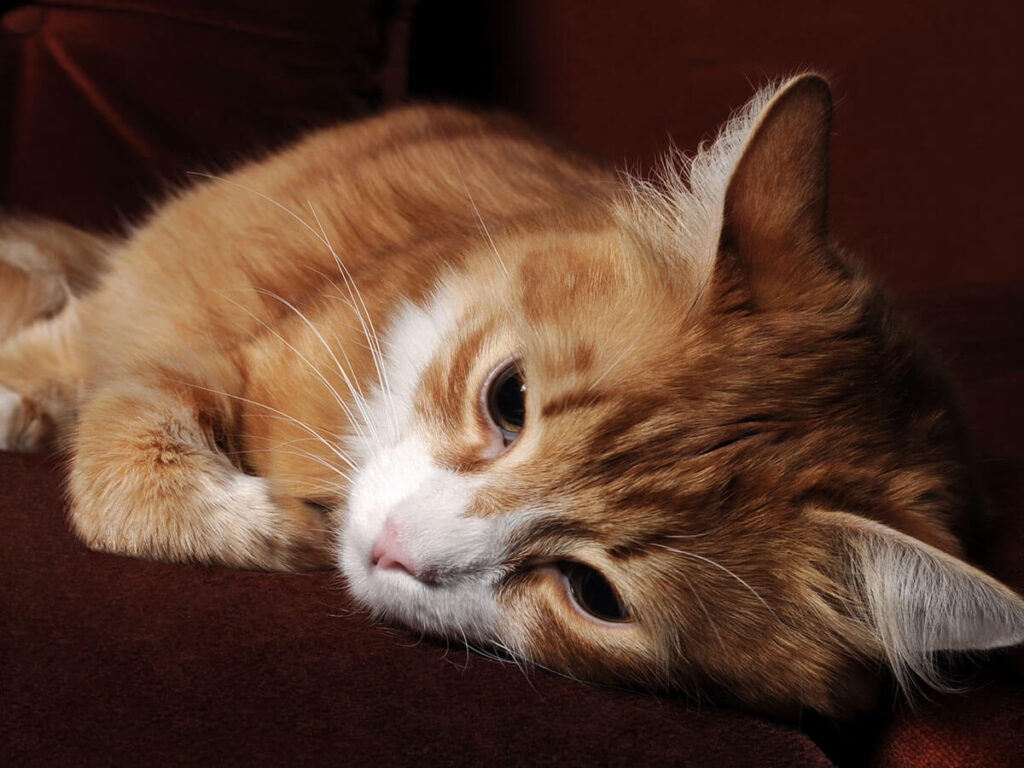
The Health Booklet
Keep a little diary in which you can note anything unusual you may notice with the date next to your observation. This practice makes understanding the chronology of events easier and enables the reproduction of a context subsequently. We keep hearing guardians claiming: “oh sure, I saw something there, there must have been something a ‘X’ days or ‘Y’ weeks ago.” If you have your notes at hand they will provide certainty. Such records will make it easier for a therapist to set up a comprehensive anamnesis.
Regular weight check
A regular weight check goes without saying. The simplest way is to check your own weight first and then again but this time with your cat in your arms. The difference is your cat’s weight. A note in the Health Booklet allows the long-term monitoring of your cat’s weight development. Affordable pet scales are available at pet shops, which are definitely more precise.
Check your cat’s coat
Also check your cat’s coat regularly. Cuddle and snuggle times are the most suitable to complete such tasks. Check for lumps on the skin, areas sensitive to touch or pressure, parasite infestation and superficial injuries. It’s easy to examine the ears, eyes, mouth and feet at times like this.
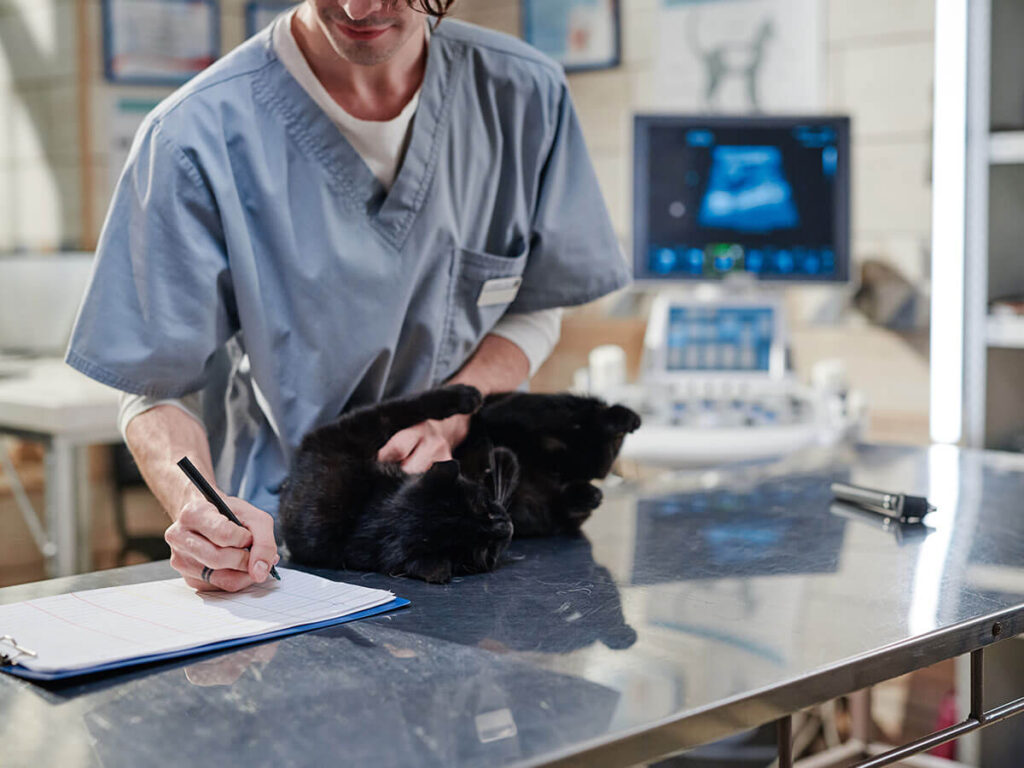
Temperature
Fever or high temperature can be noticed first at the ears and the base of the tail. These superficial checks do not replace the proper measurement of body temperature, but do serve as a reference. Temperature can be measured rectally with a digital thermometer. Please note that the normal body temperature for cats is higher than for people: it is between 37.5 and 39°C.
Urinating outside the litter box
Urinating outside the litter box can indicate a disease. First, a pH-test of fresh urine should be made, which in itself often leads to discoveries.
Urine pH-test strips are available at every pharmacy with an indicator stripe for pH values ranging from 5.6 to 8.0. The measured pH value of the cat’s urine should be between 6.2 and 6.8. Always take more than one measurement, because the pH value varies. One-time minor deviations over or below normal values are not an issue.
A pH value over 7.0 may indicate struvite crystals or struvite stones. In case of alkaline urine please do not follow the usual advice of many vets, namely a transition to acidified dry food. In our experience, as a general rule, dry food is not suitable for taking control over this problem in the long term. It is recommended to make a transition to high-quality grain-free wet food or raw food.
Diarrhea
Diarrhea and diseases of the digestive tract are especially bad for the animals affected. They leach out the body and quickly lead to dehydration and fatigue. Long-term diarrhoea can be a life threatening condition. We have made good experiences with the addition of carrot granules (which can be substituted with mashed potato powder). A teaspoonful of it mixed under the food can work small miracles.
Diarrhea easily occurs during food transitions or even at higher temperatures. Avoid quickly administering antibiotics and try other therapies first. If the diarrhoea lasts longer than three days despite the administration of carrot granules, consult your vet.
Adding carrot granules or mashed potato powder
When adding carrot granules or mashed potato powder in the food, make sure you don’t add too much. Increasing the quantity slowly or adding some water to the food will improve acceptance. Please always mix it well!
Diabetes
Unfortunately, diabetes is an increasingly frequent issue in cats. The reason for it in most cases is malnutrition lasting for years. Once the cat is diagnosed with diabetes, most cat guardians are ill-advised and the animals receive a wrong treatment. We know from our own experience that diabetic pets receive wrong treatments extremely frequently – even by so-called specialists.
If you experience signs of diabetes (excessive drinking, increased urination), gain some information about the topic here (in German)
www.katzendiabetes.info and www.tierdiabetes-shop.de
Please note: there are many diabetes forums online with inaccurate recommendations. Both our aforementioned links are proven and as far as we can judge, you will find the best information about the topic of diabetes in cats online (in German).
Diabetes is a treatable condition rather than a death sentence, but you need to engage yourself in it. Your vet cannot and will not do it for you.
Summary
In case of a disease, you need to make a decision about which form of therapy is suitable. In most cases when your kitty is ill, there may not be enough time to thoroughly deal with this question. So the best thing you can do – when your kitty is healthy – is to try and find the experts in advance you’re going to trust in the case of a disease. We don’t quite trust vets who recommend the usual (prescription) diets and gravitate to excessive vaccination or constant preventive deworming. You can check our tips on related literature here. An alternative can be a homeopath or an alternative practitioner for animals who you trust.
In our opinion, dogmatists are not very reassuring. A vet dismissing all the alternative treatments as charlatanism is just as “narrow-minded” as a homeopath demonizing all the conventional medical practitioners. It should be more important for everyone to be aware of his or her own boundaries! Nobody is all-knowing, only the demand everything to know is problematic.




